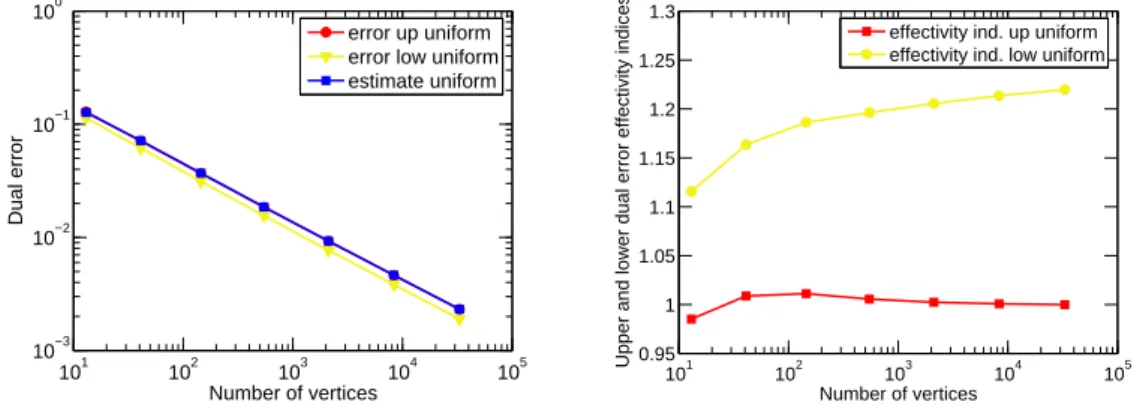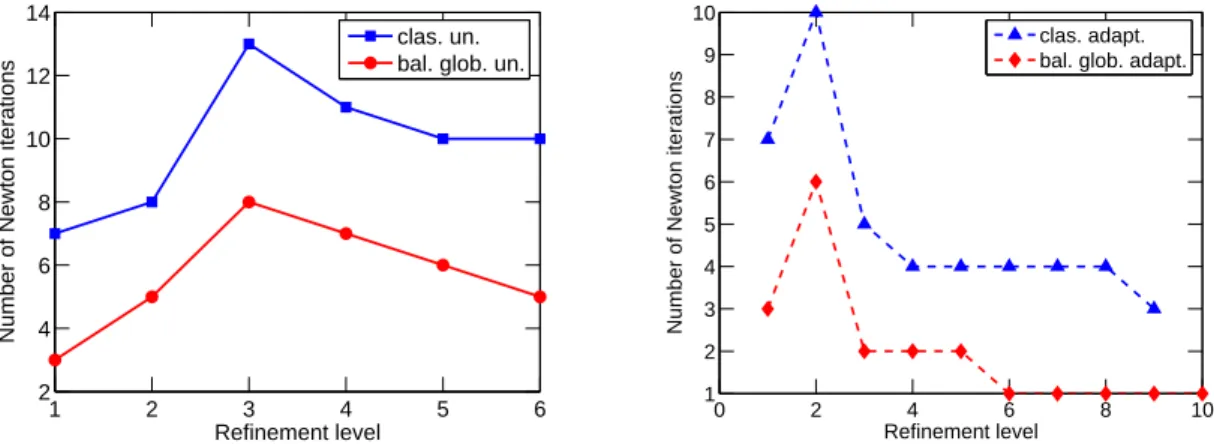Guaranteed and robust a posteriori error estimates and balancing discretization and linearization errors for monotone nonlinear problems
Texte intégral
Figure




Documents relatifs
Figure 12: [Sharp-Gaussian of Section 6.1, strategy with local Neumann problems] Relative energy error k∇(u − u ` )k/k∇uk as a function of cumulative time spent on
In Section 3, we devise and analyze equilibrated flux a poste- riori error estimates for inhomogeneous Dirichlet and Neumann boundary conditions, varying polynomial degree,
f is a finite tensorial product of spatial and temporal functions, then sharper bounds can be obtained by solving a set of independent coarse and low-order conforming approximations
Our estimates yield a guaranteed and fully computable upper bound on the error measured in the space-time energy norm of [19, 20], at each iteration of the space-time DD
We give an a posteriori error estimator for nonconforming finite element approximations of diffusion- reaction and Stokes problems, which relies on the solution of local problems
Polynomial robust stability analysis for H(div)-conforming finite elements for the Stokes equations. Elliptic reconstruction and a posteriori error estimates for parabolic
A posteriori error estimates for finite element discretization of (1.1a)–(1.1b) have been a pop- ular research subject starting from the Babuˇska and Rheinboldt work [8]. One
Our theoretical analysis is now confirmed by different numerical examples. The first two ones are used to confirm the efficiency and reliability of our error esti- mator, while

